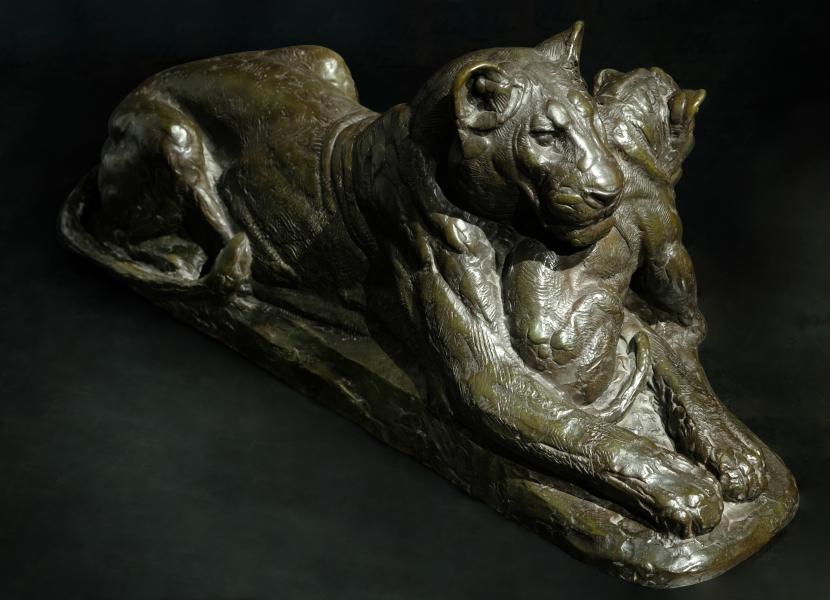Lionne et son lionceau, 1946
Bronze with brown patina, signed and numbered. Edition of 7 copies. Vintage lost wax casting bearing the stamp " E. Godart cire perdue ".
76 x 31.50 cm
Provenance:
Acquired directly from the artist
Private collection, France
Exhibitions:
Paul Jouve exhibition, Cercle Volney, Paris, December 13, 1955 - January 5, 1956, exhibition of the plaster model under n°4.
Exhibition Jouve-Villa, Atelier de Paul Jouve, April 1959.
Exhibition Jouve-Desprès, Atelier de Paul Jouve, 7-11 June 1967.
Recent acquisitions, Musée des Années 30, Boulogne Billancourt, February 1-28, 2007.
Bibliography:
Paul Jouve, Charles Terrasse, Editions du Livre de Plantin, Paris, 1948, reproduced on pp. 39 and 139.
Paul Jouve, Félix Marcilhac, Editions de l'Amateur, Paris, 2005, reproduced on p. 278 and 279 and in the catalog of the main sculptures p.353.
Certificate of authenticity established by Mr. Dominique Suisse, rightful owner of the artist.
A rare bronze sculpture by Paul Jouve
This moving scene between a lioness and her cub is Jouve's last sculpted work, begun in 1945. He was then an established artist, whose fame was important. His friend Georges Leroux, also a member of the Institute, decided to paint his portrait, while he was making the wax model of this sculpture, which was particularly dear to his heart (this portrait of Jouve by Leroux will be offered to the artist and exhibited at the gallery l'Art français in April 1946, then bequeathed to the Institute of France, which will place it on deposit at the Musée des Années 30 in Boulogne Billancourt).
From the wax model, a plaster cast of the sculpture was made, followed by bronze proofs, which were printed as the exhibitions and orders came in.
Only seven copies of the model were cast: two at first, by the Godard foundry, which then cast four proofs, numbered out of four, and finally a final artist's proof, numbered 1/1, which Jouve kept in his studio until his death and which is now in the collections of the Museum of the 1930s in Boulogne Billancourt.

